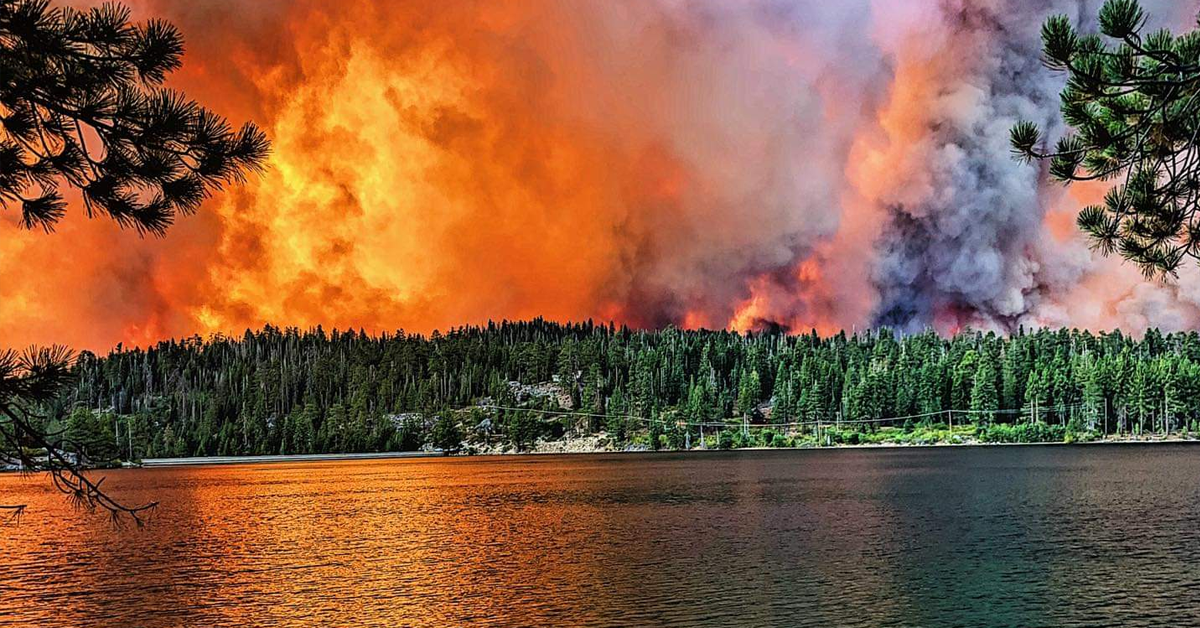Nearly one year removed from California’s largest wildfire in its history – the Creek Fire – a push by Federal forestry officials to follow-through on calls to actively manage forests is facing stiff resistance from environmental groups.
The face-off between the U.S. Forest Service and three environmental lobbies have led to a legal spat in Fresno’s Federal Court over the Service’s ability to activate dozens of projects to thin the Sierra and Sequoia National Forests, reduce vegetation, clear additional wildfire fuel, and install firebreaks to prevent deadlier wildfires in the Sierra foothills.
So what’s culprit in the fight? The Southern Sierra Nevada fisher, a regional subspecies of the endangered weasel-like Pacific fisher.
Unite the Parks, a Los Osos and Mariposa-based group seeking to convert Federal lands between Yosemite and Kings Canyon National Parks into a national monument; Sequoia ForsstKeeper, a Kernville-based environmental protection advocate; and Earth Island Institute, a Berkeley-based environmental lobby, lead the suit waging two key claims.
First, that logging practices sought by the U.S. Forest Service in the two local forests would continue to eliminate suitable habitat for a population that was estimated at 500 total in 2011.
And second, that a bevy of logging activities in forests increases the severity of wildfires rather than decreases them.
Fuzzy math available on the fisher
In its initial complaint, the environmental groups note the limited data available to determine the population of Pacific fisher possibly affected by the Forest Service’s operations.
In an environmental assesment, the U.S. Fish and Wildlife Service, citing studies, estimated that the population of fishers in the region was less than 500 total. Of those 500 fishers, less than 300 were adults.
It also found that – despite significant drought, tree mortality, insect infestation in its habitat, and wild fires – the population has remained stable due to estimates from the forests’ regional monitoring program of the species.
Putting logging practices in the scope
In addressing the suit, a Unite the Parks representative laid out clearly that the top priority of the suit was to suspend logging practices in the Sierras to protect the mammal species.
“A lot of things have happened in the Sierra,” Unite the Parks director Deanna Wulff told KMPH. “We’re asking them to re-evaluate conditions before they go forward on logging.”
However, the suit targets more than the U.S. Forest Service’s logging activities in the Sierra foothills.
It seeks to halt 45 different forest management operations, some of which go far beyond logging activities and are centered around proactive, preventative measures related to future wildfire risk.
Forest officials have long argued that a holistic approach to forest management – combining multiple activities in a single area – is is key to effectively and efficiently reducing fuel to prevent devastating wildfires.
Meanwhile, the impact of the forest management activities on the species – while often difficult to nail down – has some bright lines, environmental advocates argued in their complaint.
They pointed to five particular operations, spanning 20,000 acres of forest, that are likely to have an impact on the species. Of the 20,000 acres set for wildfire prevention actions, all but one emphasize logging.
In those cases, the U.S. Department of Fish and Wildlife and Forest Service underwent biological assessments, as required by the Endangered Species Act, to engage in activities that may affect the species (known formally as an “incidental take”) before being authorized.
As for the remaining 40 projects? The two Federal agencies found that their activities “may affect, but are not likely to adversely affect” the fisher species.
Some of the projects, environmentalists note, are set for review or withdrawal by regardless of the lawsuit.
Why? Because the devastation wrought by Creek and Castle (SQF Complex) fires rendered the preventative measures moot at this time.
From the ashes of the Creek Fire, local resistance emerges
For Fresno County Supervisor Nathan Magsig, a frontline advocate for residents in the Sierras who led the charge in coordinating local response to the Creek Fire, the environmental obstruction rings as disingenuous as it is dangerous.
“The timing of this lawsuit couldn’t be worse,” Magsig said, noting the start of California’s wildfire season.
He points to the group’s second key claim underlying its push to halt forest management activities – that thinning forests contribute to worse wildfires – as being particularly egregious.
“The point that this group makes – that somehow unmanaged forests don’t burn as hot and managed forests burn hotter and quicker – is asinine,” Magsig said in conversation with The Sun on Tuesday.
“The best way to manage a fire is to remove fuel source and ladder fuels, which can take a fire from the forest floor and get it up into the crown of trees.”
Magsig noted that the resistance from environmentalists against forest management and wildfire prevention runs counter to efforts undertaken by Gov. Gavin Newsom.
“The Governor has been touting the relationship he’s fostered with the U.S. Forest Service, where their plan is to try and manage and thin about 1 million acres a year,” the Fresno County Supervisor said. “Lawsuits like this stymie any kind of progress to return our forests back to a healthy state.”
He noted that key elements of the projects pursued by the U.S. Forest Service actually benefit the trees needed to support the fisher species in the Sierra and Sequoia national forests.
“One of the reasons that the bark beetle has devastated eastern Fresno county is because you’ve had so many trees per acre competing for water, and what that does is it not only stresses the smaller trees, but also the larger trees that these groups are claiming to want to protect,” he added.
So, what’s next?
The controversy sits in front of Fresno-based U.S. District Court Judge Dale A. Drozd.
Last week, he took soundings from the pair of Federal agencies and trio of environmental groups regarding a preliminary injunction to temporarily halt the 45 projects.
A ruling on the potential injunction is still forthcoming.









